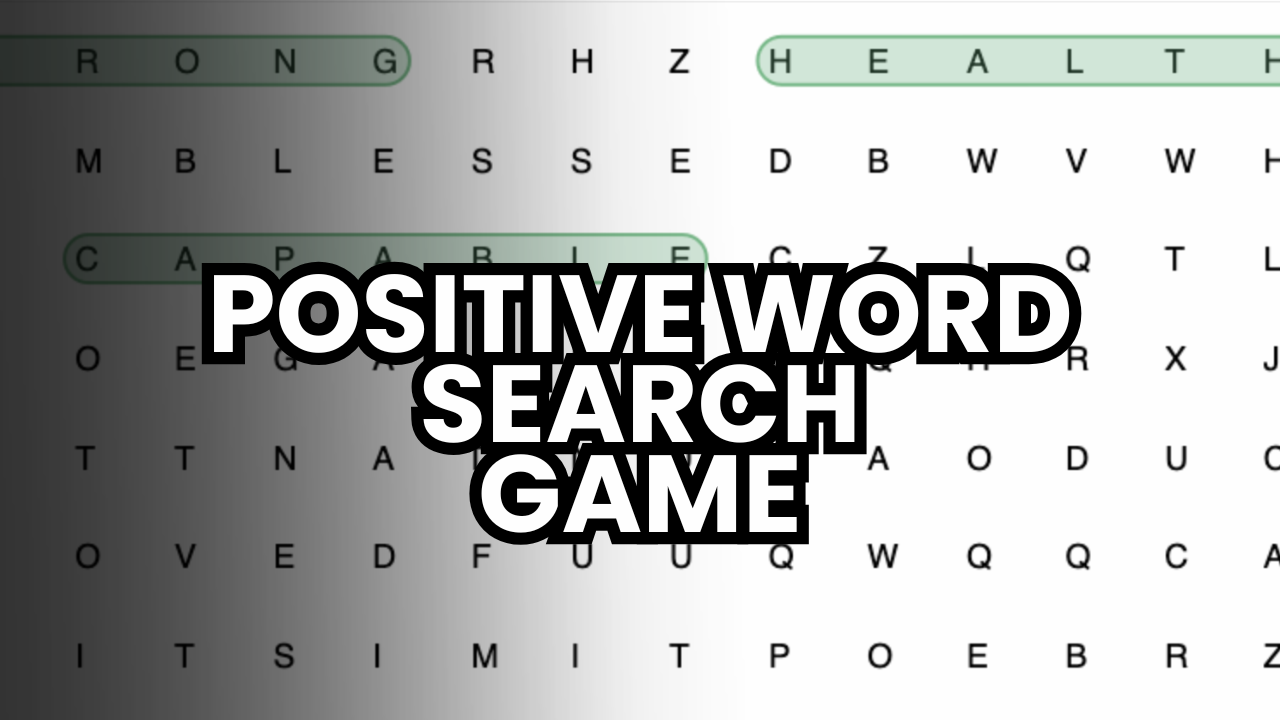Reframing Quitting: A Powerful Act of Self-Respect

The word “quitting” often carries a heavy weight of negativity. It’s frequently associated with failure, weakness, and a lack of perseverance. From childhood tales to motivational speeches, the message is often clear: “winners never quit.” However, clinging to this notion can inadvertently lead to prolonged suffering and missed opportunities. This exploration aims to reframe quitting, not as an act of giving up, but as a powerful and courageous skill known as “strategic quitting.” This involves making deliberate and thoughtful decisions to let go of endeavors that no longer align with our goals, values, or well-being. It’s about taking control of our lives and consciously choosing paths that foster growth and fulfillment.
Understanding Strategic Quitting: A Calculated Approach
Strategic quitting is far more than simply abandoning ship when the waters get rough. Instead, it represents a calculated and proactive approach, born from careful analysis and a deep understanding of one’s resources and aspirations. It is a deliberate decision, made after thoughtful consideration, acknowledging that the current course of action might not lead to the desired destination. Unlike reactive quitting, which is often an emotional response to immediate difficulties, strategic quitting is an active process rooted in data and factual information, devoid of impulsive emotion. The core principles of this approach revolve around several key elements. Firstly, it’s about the prudent management of resources – time, energy, and money – recognizing their finite nature and the importance of investing them wisely. Secondly, strategic quitting involves a continuous assessment of whether current efforts align with one’s evolving goals and core values, allowing for necessary realignments as personal and professional landscapes shift. Furthermore, it necessitates recognizing when continued efforts are yielding diminishing returns, signaling a potential need to reassess and consider a different course of action. Prioritizing long-term well-being, both mental and physical, is another crucial principle, acknowledging that persistence at the expense of health is ultimately unsustainable. Ideally, strategic quitting also involves setting predefined “kill criteria” or “unless” clauses at the outset of an endeavor, providing clear signals for when it might be time to walk away. For many, particularly in professional contexts, strategic quitting can also be about focusing one’s limited resources on becoming the best in a specific niche, eliminating distractions that hinder this focused pursuit.
The Psychological Benefits of Letting Go

The act of strategically quitting can unlock significant mental freedom and lead to numerous psychological benefits. By consciously letting go of things that no longer serve us, we can experience a notable reduction in stress and anxiety. This release from draining commitments allows for increased focus and mental clarity, enabling us to direct our cognitive resources towards more meaningful and productive areas. Furthermore, strategic quitting can lead to an improved mood and an enhanced sense of overall well-being, as individuals align their lives more closely with their true desires and values. The successful navigation of the decision to quit and the subsequent pursuit of more aligned paths can also boost self-esteem and cultivate a greater sense of personal agency. By freeing up mental space and emotional energy, strategic quitting allows for the reallocation of these valuable resources to more positive and growth-oriented pursuits. Ultimately, this process empowers individuals to feel more in control of their lives, fostering a stronger sense of agency and reducing feelings of being trapped in undesirable situations. These benefits are often intertwined with the establishment of healthier boundaries and a greater focus on self-preservation, ensuring that our commitments support rather than undermine our overall well-being. The act of strategically quitting can even create a “vacuum,” opening up space for new ideas, opportunities, and directions to emerge, fostering a sense of renewal and growth. By viewing quitting as a strategic decision, individuals can cultivate a more flexible and growth-oriented mindset, embracing change as an opportunity for learning and progress, rather than a sign of failure.
Overcoming the Sunk Cost Fallacy: Focusing on Future Potential
One of the significant hurdles in embracing strategic quitting is the “sunk cost fallacy.” This psychological phenomenon describes our tendency to continue with an endeavor simply because of the time, money, or effort we have already invested, even when abandoning it would be more beneficial. Several psychological factors fuel this fallacy. Loss aversion makes the pain of admitting a loss feel more significant than the potential gain of moving to a better opportunity. The commitment and consistency bias drives our need to remain consistent with past decisions, making it hard to abandon projects we’ve publicly invested in. Emotional attachment to our endeavors can cloud our judgment, making it difficult to see when it’s time to let go. Finally, the fear of regret can make us cling to failing projects, worrying about potential future success or value. Overcoming this bias requires a conscious effort. One strategy is to focus on the future value and potential of alternative paths, rather than dwelling on past investments. Seeking external perspectives from those not emotionally invested can provide clarity. Setting clear limits and “kill criteria” at the outset can help guide decisions later. Considering the opportunity cost – what else could be gained by redirecting resources – is also crucial. Finally, reframing sunk costs as learning experiences or past “gifts” can diminish their emotional hold. The sunk cost fallacy often leads to the counterproductive behavior of “throwing good money after bad,” trapping us in unproductive situations. By shifting our focus to future potential and accepting the irrecoverable nature of past efforts, we can break free from this trap and make more rational decisions.
Strategic Quitting Across Life Domains: A Catalyst for Growth

Strategic quitting can be a powerful catalyst for growth across various life domains. In career changes, strategically leaving a stagnant, unfulfilling, or toxic job can open doors to opportunities that better align with passions, values, and long-term goals. Recognizing when a relationship has become unhealthy or toxic and strategically choosing to end it is crucial for prioritizing personal well-being and creating space for healthier connections. In the realm of projects, whether personal or professional, strategically discontinuing ineffective initiatives that are not yielding results or have become stagnant can prevent further waste of resources and allow for focus on more promising endeavors. Even in our personal lives, strategically letting go of time-consuming hobbies that no longer bring joy or have become a burden can free up valuable time and energy for more fulfilling activities and priorities. It is important to note that strategic quitting isn’t solely about escaping negative situations; it can also involve making conscious choices to step away from seemingly “good” or comfortable paths to pursue “better” or more aligned opportunities that offer greater potential for growth and fulfillment. Ultimately, the decision of when and what to strategically quit is deeply personal and depends on individual values, long-term goals, and unique circumstances.
Making Informed Decisions: Evaluating When to Strategically Quit
Making informed decisions about when to strategically quit requires careful evaluation. One valuable method is cost-benefit analysis, where the potential gains and losses of continuing are weighed against those of quitting. Assessing the alignment with long-term goals is also crucial; if the current path doesn’t support your future aspirations, pivoting might be necessary. The impact on mental and physical health should never be overlooked; if a situation is consistently detrimental to your well-being, it’s a strong indicator for potential quitting. Evaluating the potential for growth in alternative paths can also illuminate whether quitting one thing might lead to more fruitful opportunities. Considering the opportunity cost – what you are giving up by staying – can provide a crucial perspective. Finally, trusting your intuition and “gut feeling” can often provide valuable guidance. Established decision-making frameworks like WRAP and REFLECT can also provide structured approaches to evaluating these factors. A key aspect of this evaluation is distinguishing between temporary setbacks and fundamental misalignment. Regular self-reflection and honest assessment are also vital for making timely and strategic quitting decisions.
Challenging the Stigma: Reframing Quitting as an Act of Self-Respect

Despite its potential benefits, quitting often carries a significant societal stigma, stemming from a cultural emphasis on unwavering perseverance and a fear of being labeled as someone who gives up easily. The pervasive “winners never quit” mantra often overshadows the wisdom of knowing when to walk away. However, it is crucial to challenge this narrative and reframe quitting as an act of self-respect and a necessary skill for personal and professional growth. Embracing strategic quitting demonstrates self-awareness, courage, and a focus on long-term well-being. Destigmatizing quitting can lead to significant benefits, including an increased willingness to prioritize mental health and pursue more fulfilling life paths. The fear of being judged often keeps people trapped in unsatisfying or harmful situations. By reframing quitting as a strategic skill and an act of self-care, we can empower ourselves to make choices that prioritize our well-being and long-term success, unburdened by societal expectations.
Navigating the Exit: Effective and Graceful Quitting Strategies
When the decision to strategically quit has been made, it is essential to navigate the process effectively and gracefully to minimize negative impacts. This involves employing thoughtful communication techniques, being honest and clear about your decision while remaining respectful and empathetic towards others involved. Planning for the transition is also crucial, which may include providing adequate notice in professional settings, offering assistance with the handover of responsibilities, diligently completing pending tasks, and thoroughly documenting processes. It is vital to maintain professionalism and avoid burning bridges, regardless of the reasons for quitting, as this can have lasting impacts on your reputation and future opportunities. In a job context, it’s wise to have a strategy for handling counter offers should they arise. When ending personal relationships, such as friendships, approaching the situation with grace and respect is paramount. Similarly, leaving volunteer commitments should be handled respectfully, with consideration for the organization’s needs. In business or project contexts, clearly communicating strategic quitting to stakeholders ensures transparency and minimizes potential negative consequences. For those in leadership roles, planning a smooth transition is crucial for the continued success of the team or organization. By prioritizing a graceful exit, individuals can maintain valuable relationships and leave a positive lasting impression. Effective communication, characterized by honesty and empathy, is at the heart of navigating these transitions smoothly.
Examples of Strategic Quitting: Learning from Success Stories
History is replete with examples of successful individuals and companies that have strategically quit certain paths to achieve greater success. Individuals like Steve Jobs, upon returning to Apple, made the bold decision to cut 70% of the company’s product lines, a move that is widely credited with the company’s subsequent resurgence. Jeff Bezos famously left a promising career on Wall Street to found Amazon, a strategic quit that revolutionized the e-commerce landscape. Julia Child transitioned from a career in intelligence to become a celebrated chef, demonstrating that strategic career changes can lead to immense personal fulfillment. Even in the world of sports, many athletes have strategically retired early to protect their health or pursue other passions, highlighting the wisdom in knowing when to step away from even a successful career. Companies too have demonstrated the power of strategic quitting. Apple, for instance, eventually discontinued the highly successful iPod to fully focus on the iPhone. Netflix evolved from a DVD rental service to a streaming giant and then further pivoted to become a major content producer. Instagram famously pivoted from a multi-feature app called Burbn to focus solely on photo sharing, a decision that led to its immense popularity. These examples illustrate that successful strategic quitting often involves pivoting or redirecting resources towards more promising opportunities that align better with evolving goals or market conditions. They underscore the courage and foresight required to strategically quit, often going against conventional wisdom or initial expectations.
Conclusion: Embracing the Power of Letting Go
In conclusion, the art of strategic quitting is a powerful and often overlooked skill that is essential for navigating the complexities of life. By reframing quitting as an act of self-respect and learning to let go of what no longer serves us, we can unlock mental freedom, overcome the trap of sunk costs, and create space for new opportunities and growth. The decision to strategically quit, while deeply personal, can be guided by methods such as cost-benefit analysis, alignment with long-term goals, consideration of well-being, and an understanding of opportunity cost. By challenging the societal stigma associated with quitting and embracing it as a necessary skill, we can empower ourselves to make choices that prioritize our fulfillment and long-term success. Learning to quit effectively and gracefully, through thoughtful communication and planning, ensures that we move forward without burning bridges. The wisdom gleaned from the examples of successful individuals and companies that have strategically quit underscores the transformative power of knowing when to let go. Embracing strategic quitting is not about giving up; it is about consciously choosing to redirect our precious resources towards paths that truly align with who we are and who we aspire to become, ultimately leading to a more intentional and fulfilling life. Consider reflecting on your own life: are there areas where strategically choosing to let go might open doors to new possibilities?
| Scenario | Brief Description | Key Indicators Suggesting It’s Time to Consider Quitting | Potential Benefits of Strategic Quitting in This Scenario | Example(s) from Research Snippets (mentioning the snippet ID) |
|---|---|---|---|---|
| Career Change | Leaving a job | Feeling apathetic, complacent, dreading work, lack of growth opportunities, job affecting personal life | Increased job satisfaction, better work-life balance, opportunities for growth and skill development, alignment with passions and values | Jeff Bezos quitting Wall Street for Amazon , Julia Child’s career change |
| Unhealthy Relationship | Ending a harmful connection | Constant negativity, disrespect, abuse (physical or verbal), feeling drained, lack of support, trust issues | Improved mental and emotional health, increased self-esteem, freedom from toxic dynamics, opportunity for healthier relationships | Ending a toxic relationship for well-being |
| Ineffective Project | Stopping a failing endeavor | Too many unclear goals, scope creep, diminishing returns, lack of user involvement, low team morale, ignoring evidence of failure | Reallocation of resources to more promising initiatives, reduced stress, prevention of further losses, opportunity for learning | Apple cutting product lines |
| Time-Consuming Hobby | Letting go of an unfulfilling pastime | Dreading the activity, no longer bringing joy or meaning, lack of time or energy, feeling obligated, wanting to try something new | More free time for other pursuits, reduced stress, opportunity to explore new interests, increased focus on more enjoyable activities | Quitting violin lessons due to lack of enjoyment |
Enhance Your Journey with These Empowering Tools
As you embrace change and navigate life’s transitions with the help of affirmations, it’s important to equip yourself with tools that support your growth and well-being. From affirmation card decks to self-care essentials, the right products can help reinforce your positive mindset and create a nurturing environment for personal transformation.
Below are some carefully selected items that can complement your affirmation practice, making it easier to stay focused, resilient, and mindful throughout your journey :
- 30.48 cm 15-Note Steel Tongue Drum D Key Percussion Instrument Cornices Shape Handpan Drum With Drum Mallets Carry Bag And Music Book, Used For Music Education Concert Spiritual Healing Yoga Entertainment 👉 item link
- Messages of Life Inspiration Cards – 44-Card Deck with Guidebook for Positive Affirmations & Spiritual Growth, Durable Paper Material, Ideal for Ages 14 & Up – Motivational Oracle Card Game 👉 item link
- Deck of Emotions Playing Cards – 54 Card Set for Mental Health, Family Bonding, Party Fun – Christmas, Halloween, Easter, Hanukkah, Thanksgiving – Ideal Gift for Birthday, Aesthetic Home Decor – Paper Material, No Electricity Needed 👉 item link
- 1pc Self-Care English Cover Star Moon Multicolored Optional Record 5 Minutes A Day, For Learning Supplies, Notebook, Library, More Affirmations Reflections, Optimistic, Happy, Simple Undated Hardcover 👉 item link
- 3pcs Wooden Framed Canvas Poster, Modern Art, Inspirational Canvas Painting, Ideal Gift For Bedroom Living Room Corridor, Wall Art, Wall Decor, Winter Decor, Room Decoration 👉 item link









